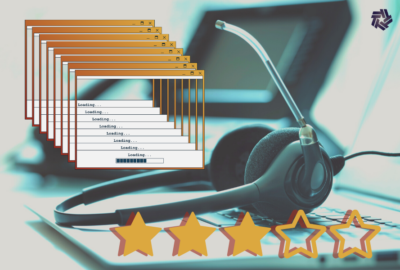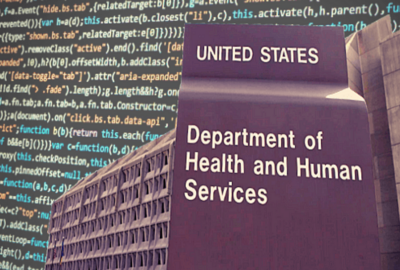Charles Havekost – Department of Health
Charles Havekost is the Chief Information Officer for the US Department of Health and Human Services. <br> <a href=\"?sid=123944&nid=105\">Mr. H...
FEDERALNEWSRADIO.COM: Let me ask you a career-related question. As you watch the government IT workforce, you see a lot of folks leaving civil service to go to the private sector. After a long career with the government, you left and came back. What was it about technology and the government that drew you back?
HAVEKOST: One of the things that drew me back was the mission and the scope of what gets done in federal service. I had been an HHS employee for over 20 years when I went out to try my hand in the private sector. I had always been proud of the mission of HHS and specifically the National Institutes of Health where I had been working. Even in IT, I felt like I was a cog in a machine that cranked out benefits for the health of humankind. That’s a tremendous mission. It made me feel good about what I was doing. I wasn’t creating a vaccine, but I was providing support to the people who were creating vaccines. I went out to the private sector and – maybe it was just the telecom industry where I was working – the mission didn’t resonate nearly as well and didn’t provide as much of an upside for humankind as the work that gets done at Health and Human Services. So now that I’ve come back I once again feel like a piece of an organization that is creating benefits for humankind, for our country and our citizens. That’s a powerful, wide-reaching, tremendous mission and a great, great effort to be a part of.
FEDERALNEWSRADIO.COM: Before I ask you about some of the things that you want to work on in the future, let’s talk about some of the things that are already in place. Can you tell me a little about “grants.gov”?
HAVEKOST: Grants.gov is one of the e-gov initiatives that comes out of the president’s management agenda. The goal of grants.gov is to take some of the business processes that had been pursued by individual agencies or pieces of agencies in the grant making arena and try to provide a more unified business process. Let me give you an example. Suppose a medium-sized nonprofit is applying for grants with four or five different agencies. There might be three or four grant opportunities across several agencies that this nonprofit might be going for. One of the problems in the past was that it was difficult, especially for smaller organizations, to know where the grant opportunities were located. They were spread across the Web sites of federal agencies, they were buried in the Federal Register, It was difficult to know where all the opportunities were. That’s one of the things that grants.gov set out to fix, and has fixed, by providing a unified grant opportunity announcement site. Now an organization trying to find a grant opportunity in a particular subject area can go and search at grants.gov and find all the opportunities are out there no matter what agency is announcing it. So they don’t need to know the agency before they go and do the search. They just need to know the subject area for the grants they are providing. The other thing that grants.gov is doing is to unify the grant application process and make it electronic. Up until now, the application process has been very much a paper-based process and has had unique requirements, depending on what agency was being applied to. With grants.gov a unified electronic application mechanism has been put into place that makes it easier for applicants to be able to submit applications. The best example is where a small organization that goes to the effort to put together a grant application for one agency can leverage that experience using grants.gov to be able to apply to another agency. In the past they would have had to learn a completely different set of processes and contact points in order to apply to other agencies. They can leverage the experience and become more experienced, better grant applicants. The benefits to the applicant is that they can learn and use that experience across agencies so they don’t have to have quite as big of an infrastructure of experience to apply to different agencies. The advantage to the agencies is that they get more experienced grant applicants and they get a better pool of grant applications.
FEDERALNEWSRADIO.COM: Talk about the quintessential cross-agency effort. This was complex because it involved not only your federal agency partners, but also state and local. What were you able to learn from this? How did you make that work so well? How will that translated into future projects that involve other federal agencies?
HAVEKOST: What a great experience it was to work among the 26 federal grant-making agencies, as well as the myriad of groups of organizations that are grantees. That was one of the exiting pieces. It crosses the boundaries of different marketing segments. States are grantees of the federal government as well as nonprofits and universities and research hospitals and public housing authorities. It just goes on and on, the different kinds of organizations that get grants from the federal government. So it was a great opportunity to go out and to meet with all of these groups and to talk with them and find out what it is like to be a grantee of the federal government. In some instances, it was the first time that some of these organizations had been asked what it is like to be a grantee. So it was a chance for them to tell their story as well as for the grants.gov team to take those stories back to the grant-making agencies and say “Hey listen, this is what we’re hearing out there.” In going forward, the experience of working with a lot of different federal agencies has certainly given me, at the very least, good connections across a tremendous number of agencies and good connections out in the legislative environment and with states. I feel like this has given me some of the raw materials that I can use for communicating on projects going forward. It is hard to describe the validation that comes from giving a talk before a group of representatives from a bunch of nonprofit organizations and say “Hey listen, we’ve created a unified place at grants.gov where you can find out what grant opportunities exist.” They would shout and cheer and clap because this was not something they have had before and it was a great, unmet need. It was just a great experience.
FEDERALNEWSRADIO.COM: Speaking of going forward, as you take a look at what your priorities are going to be, give me one or two of the big issues for you there at HHS.
HAVEKOST: One of the big issues at Health and Human Services is, given it is such a huge organization, how to leverage that size to get economies of scale, to get good pricing, to get consolidation of services to have standard sets of services, and also how to use that size to help foster standards in the health arena. So the challenge in a big organization is how to use that size to bring about positive results as opposed to being stymied by the size or complexity. That’s the main challenge. How to use the size to the benefit of the organization and to the benefit of the country.
FEDERALNEWSRADIO.COM: While we’re on the topic of e-gov initiatives, what technology shortfalls are there still out there that need to be overcome as you try to reach those goals?
HAVEKOST: When you say technology shortfall, one of the things that I’m a strong proponent of is XML as a format for data to be moved around between applications, and Web services as the mechanism to move that information around. Even within applications and within systems, to have systems be more modular, to have systems be the “best of breed” in a particular function and then hand the data off via a Web service in XML service. So it’s not necessarily a technology shortfall. It’s technology that is available, yet it hasn’t gotten the widespread implementation that I think we’re going to see going forward. This idea of modularizing applications, reuse of applications and code and tying things together via Web services XML is really something that is going to change how we do business. I think of how systems work generally in data flow diagrams, and this maps perfectly to the flow of data between systems and how to standardize interfaces between systems.
FEDERALNEWSRADIO.COM: What about security. What keeps you up at night when you think about security issues?
HAVEKOST: Security is always a challenge. Part of the challenge are things as necessary as patch management – how to make sure the latest patches and the latest fire signatures and scanning engines are all deployed out to the desktops in a vastly separated environment and a relatively heterogeneous environment. Security is a really, really big issue. Security is not something you bolt on at the end. Security is something you think about as you design applications and systems in a way that can be elegant and secure, yet can be usable. So often, when security is bolted on as an afterthought, it impinges on the functionality or makes a system less capable or less accessible than it was before. So by thinking about security and building security in to applications and architectures from the start, we can make sure security makes systems more usable and not less usable.
FEDERALNEWSRADIO.COM: Let me ask you about the world of IT contractors and vendors. How will consolidation efforts at agencies that are underway change the landscape.? Will it mean opportunities in new places and no opportunities where they used to exist?
HAVEKOST: A lot of times when you see a consolidation, a lot of the things that are being consolidated are small implementations that are run in-house and very often a consolidation is more outsourced. What we’ll see is that some of the things that have been run like little e-mail systems that are all serving some small office or a little database system that is serving one office’s requisitioning requirements, consolidation will pull those together, and very typically those consolidated efforts will rely on outsourced or vendor supplied support, integration and ongoing operations.
FEDERALNEWSRADIO.COM: Anything we didn’t talk about this morning that you’d hoped we’d get to?
HAVEKOST: When I talked about the mission of federal service, I think there is something to be said for being proud to be a civil servant and being proud to work for the federal government. I’ve been on the outside and I’ve been on the inside. It’s something that I’m really proud of and it’s something that I try to instill in the folks around me. I hope that anybody else who happens to hear this who is a federal government employee can think about what it is to make them proud to be a federal employee.
Copyright © 2024 Federal News Network. All rights reserved. This website is not intended for users located within the European Economic Area.






